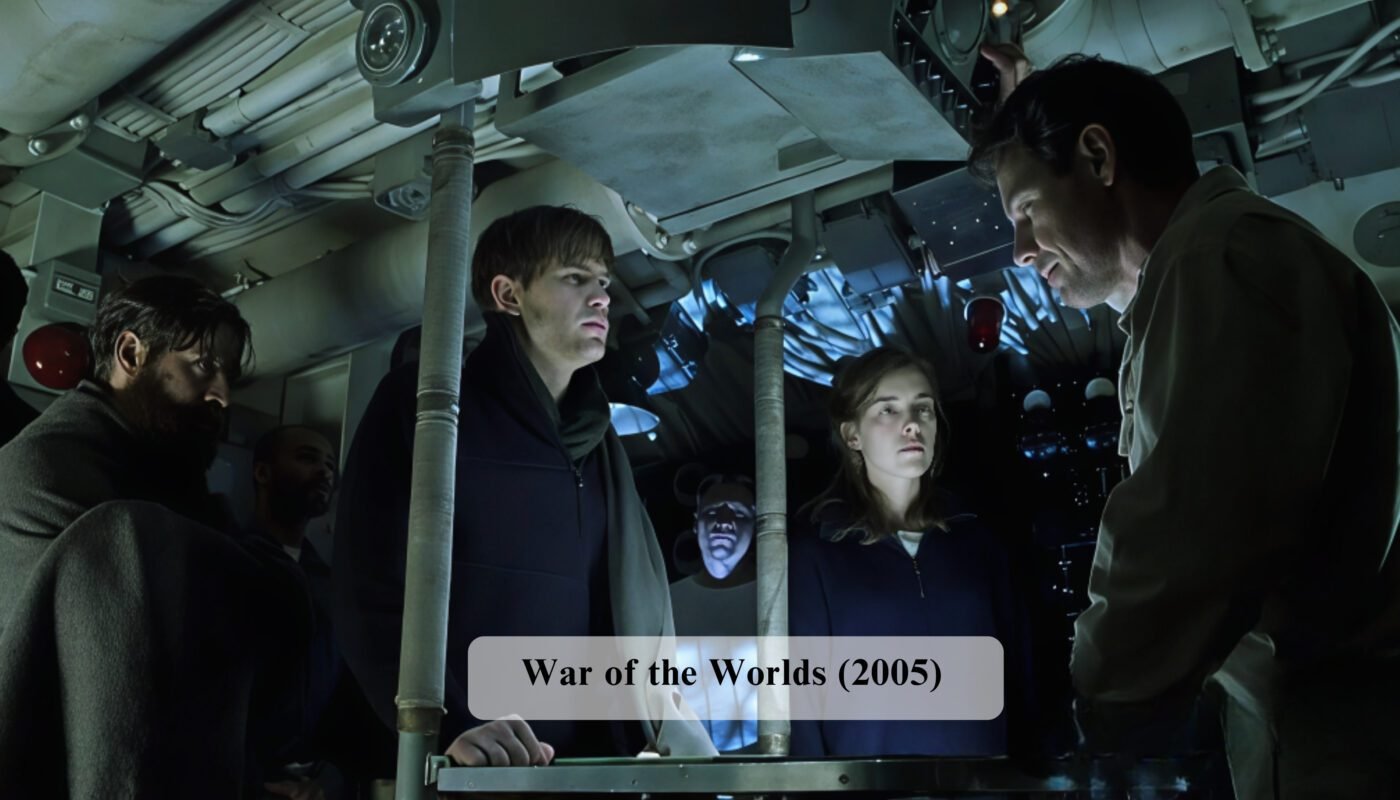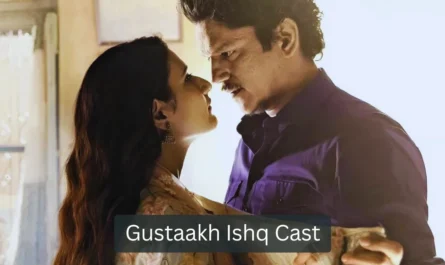When I first watched War of the Worlds (2005), directed by Steven Spielberg and starring Tom Cruise, I was only a teenager. Now, as a 25-year-old writing about it, I can say this movie still sends chills down my spine. It’s not just about aliens invading Earth—it’s about what happens to families, to society, and to individuals when everything they know collapses overnight. The movie takes us through chaos, survival, and fear in a way few science fiction films have managed.
In this blog, I’ll take you through some of the most powerful themes and sequences of the film—especially the underground shelter with Ogilvy, the terrifying alien tripods, and the eerie red weed that spreads across Earth. Along the way, I’ll share my thoughts as a fan of movies, explain why this film stands out in the alien invasion genre, and reflect on why it still feels relevant even today.
Shelter Underground: Ray and Rachel’s Harrowing Night with Ogilvy
One of the most unforgettable parts of War of the Worlds is when Ray (Tom Cruise) and his daughter Rachel (Dakota Fanning) hide in the basement with Harlan Ogilvy (played by Tim Robbins).
At first, the shelter seems like a refuge. After the tripods have wiped out entire cities with their devastating heat rays and sonic blasts, finding a basement feels like a moment of relief. But Spielberg doesn’t let us breathe easy for long.
The Tension of Survival
Ogilvy is a strange man. He’s traumatized, paranoid, and obsessed with fighting back against the aliens. For Ray and Rachel, what was supposed to be a place of safety quickly turns into another prison of fear.
The way Spielberg frames these scenes is genius. The walls are tight, the shadows are heavy, and the constant sound of alien machinery above reminds us they’re never truly safe. Watching it as a 25-year-old now, I realize how psychological this part of the movie really is—it’s not just about hiding from aliens, it’s about hiding from the madness of humans too.
The Moment of Horror
The most intense scene for me is when the alien probe enters the basement. That long, snake-like machine with a glowing eye slowly scans the dark corners of the room. I remember holding my breath the first time I saw it. Spielberg drags out the suspense as the characters try not to make a sound.
This scene reminded me of old-school horror films, where the monster doesn’t even need to roar or attack to terrify you—it’s the silence, the possibility of being found, that makes you shiver.
Ray’s Desperate Decision
When Ogilvy becomes too unstable, Ray realizes he’s putting Rachel at risk. The heartbreaking moment when Ray takes matters into his own hands shows the movie’s real theme: survival forces people to make unimaginable choices.
As a viewer, it makes me question: What would I do in that situation? Would I risk everything to keep another person alive, even if they were dangerous, or would I protect my family at all costs? That moral struggle is what makes this scene one of the most powerful in the movie.
The Unstoppable Machines: How the Tripods Hunted Humanity

The weapon of the tripods—the heat ray—vaporizes people instantly. One second they’re running, the next second they’re reduced to dust and floating clothes. Spielberg’s choice to show this in broad daylight makes it even scarier. Unlike most alien movies that rely on darkness, this film shows horror in full light, making it feel inescapable.
I remember watching this as a teenager and being stunned. It wasn’t bloody, but it was horrifying because it felt so real. As an adult now, I see how Spielberg made it more about psychological impact than gore.
The Sound That Haunts You
If you’ve seen the War of the Worlds, you know the sound I’m talking about—the deep, foghorn-like blast of the tripods. Even now, if I hear something similar, it gives me goosebumps. That sound became a symbol of terror, warning that destruction was coming.
Humanity’s Powerlessness
What’s most frightening is how powerless humanity seems. Tanks, jets, and missiles—all of them fail against the alien shields. Watching soldiers bravely fight and then get wiped out in seconds makes you realize how fragile our modern world could be in the face of a superior force.
For me, as a movie fan, that’s what makes this film unique compared to other sci-fi blockbusters. It doesn’t show humans finding clever ways to win quickly—it shows us losing, running, and hiding. The real “war” of the title isn’t just about aliens versus humans—it’s about survival versus extinction.
The Red Weed: Alien Terraforming and the Death of Earth’s Landscape
Another haunting part of War of the Worlds is the red weed.
A World Changing Before Our Eyes
After the aliens arrive, we start seeing this strange red plant-like growth covering everything—trees, buildings, cars, and even rivers. It spreads like a disease, turning Earth into an alien landscape.
What’s so terrifying is that it isn’t just random plant growth—it’s part of the alien plan to make Earth more like their home. In other words, they’re not just conquering us, they’re reshaping the very planet itself.
The Symbolism of the Red Weed
As a viewer, the red weed makes me think about nature, colonization, and destruction. Just like invasive species in real life, this alien growth represents how fragile ecosystems can be.
It also has a nightmarish beauty to it. The deep crimson color against the gray ruins of human civilization looks surreal—almost like a painting of the end of the world.
The Fate of Humanity
Seeing the red weed creep across entire landscapes makes us wonder if Earth even belongs to humans anymore. I found this part of the movie to be more haunting than the battles themselves because it suggests a future where we’re erased not just physically, but culturally and environmentally too.
Themes That Make War of the Worlds Powerful
Beyond the action and the special effects, this movie War of the Worlds is packed with deeper meanings.
Family and Survival: Ray’s journey from being a careless father to a protective parent is the emotional heart of the story.
The Fragility of Humanity: All our technology and weapons mean nothing against a superior enemy.
Paranoia and Fear: The basement scenes with Ogilvy show how humans can be as dangerous as aliens when fear takes over.
Hope in Helplessness: Even when things seem lost, survival depends on holding on to hope.
Why War of the Worlds Still Matters Today
Even though this movie came out in 2005, it still feels relevant. The themes of fear, survival, and uncertainty mirror real-world situations like natural disasters, pandemics, and global conflicts.
The idea that everything we know can collapse overnight isn’t just science fiction anymore—it’s a reality many of us have felt in recent years. That’s why revisiting War of the Worlds today feels more impactful than ever.
Final Thoughts
As a 25-year-old movie lover, writing about War of the Worlds (2005) feels like revisiting an old nightmare that still holds power. Steven Spielberg’s vision combined with Tom Cruise’s emotional performance created more than just a blockbuster—it created a survival story that makes us question what it means to be human when everything is taken away.
From the claustrophobic basement with Ogilvy to the terrifying tripods and the haunting red weed, every part of this film stays etched in memory. For me, that’s the mark of a true classic—it doesn’t just entertain, it lingers in your mind long after the credits roll.
If you’ve never seen it, or if it’s been years since your last viewing, I recommend watching it again. War of the Worlds isn’t just about aliens—it’s about us.
Want to explore more movie blogs? Click here to continue reading…




